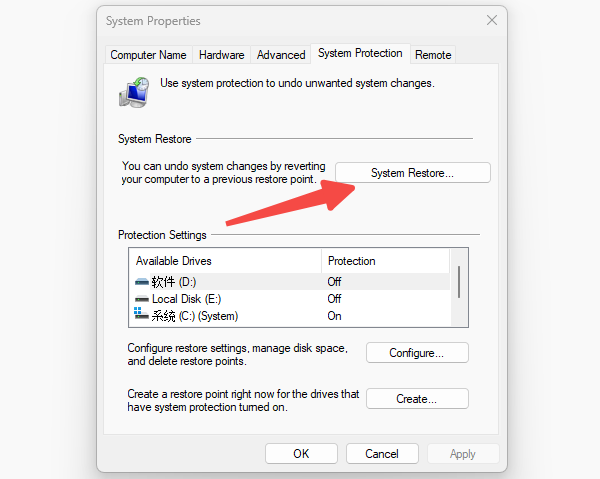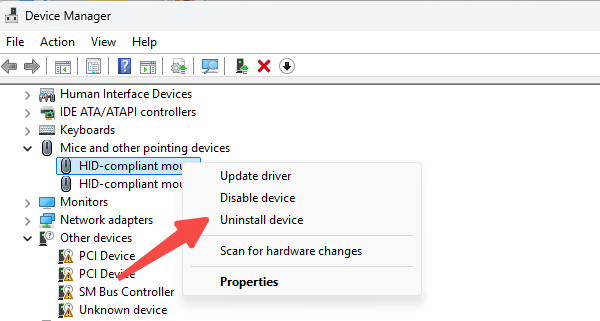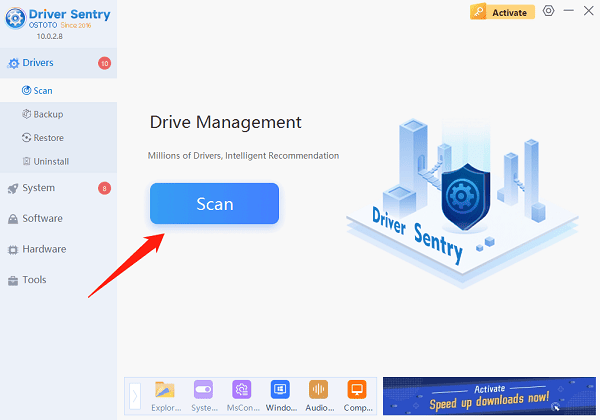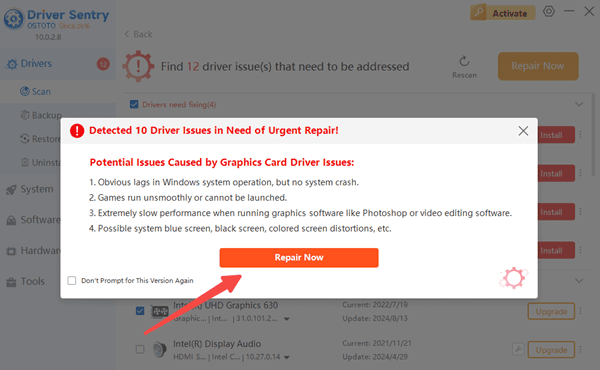
When using a computer, minor issues can occasionally arise—like the computer getting stuck in a reboot loop, unable to reach the desktop. Here are some practical solutions to help you resolve the issue quickly and get your computer back to normal.
1. Incomplete System Update Files
Cause
If a system update download is incomplete or an error occurs during installation, the computer may get stuck while rebooting and fail to start. This issue commonly occurs after an automatic system update.
Solution
Force Restart: Hold the power button for about 10 seconds to force a shutdown, then turn the computer back on.
Enter Safe Mode: If the reboot loop continues, try entering Safe Mode by pressing F8 as the computer starts, then selecting "Safe Mode".
Perform System Restore: Go to "Settings > System Info > System Protection", locate "System Restore", and select a previous restore point to revert the system to a stable state.

2. Incompatible Drivers
Cause
Driver updates can sometimes cause compatibility issues, especially with critical drivers like the graphics or audio drivers, potentially preventing the system from restarting properly.
Solution
Uninstall Drivers in Safe Mode: Restart the computer and press F8 to enter Safe Mode. In "Device Manager", find the problematic drivers, right-click, and select "Uninstall Device".

Use Driver Sentry to Update Drivers: After uninstalling, restart the computer. Download and install "Driver Sentry" to automatically scan and update your drivers to the latest compatible versions, reducing the risk of compatibility issues.
Scan for Driver Issues: Open Driver Sentry, click "Scan", and it will automatically check all hardware devices and identify any driver issues.

Update Drivers: From the scan report, click "Repair Now", and the software will update any missing or outdated drivers with the correct versions.

3. Corrupted or Missing System Files
Cause
Damaged or missing system files can prevent the computer from rebooting properly. Causes of file corruption include virus attacks, improper shutdowns, or hard drive issues.
Solution
Repair System Files: During startup, press "Shift + F8" to enter Advanced Recovery Mode. Select "Troubleshoot > Advanced Options > Startup Repair", and Windows will automatically scan and repair damaged files.
Run System File Checker: In Safe Mode, open "Command Prompt", type "sfc /scannow", and press Enter. The system will automatically scan and repair any damaged system files.
4. Hardware Issues
Cause
Hardware failures, such as faulty RAM, hard drive issues, or motherboard problems, can also prevent the system from rebooting properly. Loose connections or a failing hard drive can cause the system to hang during startup.
Solution
Turn off the computer, open the case, and carefully reseat the RAM, hard drive cables, and other hardware connections to ensure a secure connection.

5. Power or BIOS Settings Issues
Cause
Incorrect BIOS settings can sometimes prevent the system from starting, especially after installing new hardware or upgrading the system.
Solution
Restart the computer, press F2 or Delete to enter the BIOS setup, and find the "Load Default Settings" or "Restore Defaults" option. Restore the default settings, then save and exit.
Hopefully, these steps help you resolve the reboot loop issue with your computer. If you're unable to fix the problem after multiple attempts, consider seeking professional support to ensure your computer's safety and functionality.
See also:
6 Ways to Fix No Signal on Monitor
How to Fix a Computer That Won't Shutdown
How to Repair Computer Network Connection
Fix a Computer With Dual Screens One Displaying a Black Screen